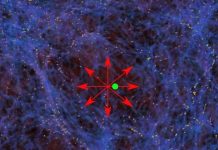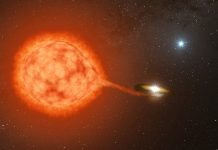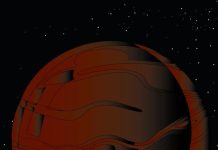
Gravity is a force we all experience daily, but its fundamental nature remains a mystery.
While Einstein’s theory of relativity suggests gravity is a force shaped by the geometry of space and time, some scientists believe it might also exhibit properties of quantum mechanics, which govern the behavior of particles at the smallest scales.
Until recently, most experiments aimed at uncovering the “quantumness” of gravity relied on creating a quantum connection, known as entanglement, between large, heavy objects.
However, the bigger an object, the harder it is to observe its quantum properties, as it tends to behave more like a regular, “classical” object.
A groundbreaking study published in Physical Review X by researchers from Amsterdam and Ulm, the birthplace of Einstein, suggests a new method to explore this quantum aspect of gravity without the need for entanglement.
This could potentially accelerate our understanding of gravity’s true nature.
The main challenge in merging quantum mechanics with gravitational theory is that experiments typically cannot access conditions where both forces are observable simultaneously.
Roger Penrose, a Nobel Prize-winning physicist, has highlighted our lack of knowledge about whether we need to merge quantum mechanics into gravity or incorporate gravity into quantum mechanics.
Historically, the idea was that quantum entanglement would be key to understanding gravity’s quantum properties. Ludovico Lami, a mathematical physicist at the University of Amsterdam and QuSoft, explained that since the 1950s, scientists have questioned whether the gravitational field of a massive object could exist in multiple states at once—a core idea in quantum theory.
Previous approaches required linking heavy objects in a quantum state, which is technically very challenging due to their mass and the difficulty in detecting such small gravitational forces. Lami and his team propose a new type of experiment using massive “harmonic oscillators,” such as torsion pendula, similar to those used in historical gravity experiments.
They have developed mathematical models to detect signs of gravity’s quantum characteristics in these experiments, without needing to create entanglement.
Though their method still leans on complex theories from quantum information science, it offers a simpler way to test the quantum aspects of gravity.
Lami noted that while their experiments don’t directly involve entanglement, the underlying principles of entanglement theory are still essential for their analysis.
This innovative approach may not only bring us closer to understanding whether gravity can be described by quantum mechanics, but it could also do so much sooner than previously anticipated.
The team is optimistic that with some technological advancements, these experiments could be feasible in the near future.
By potentially confirming the quantum nature of gravity, this research could open new pathways in both fundamental physics and our understanding of the universe.



